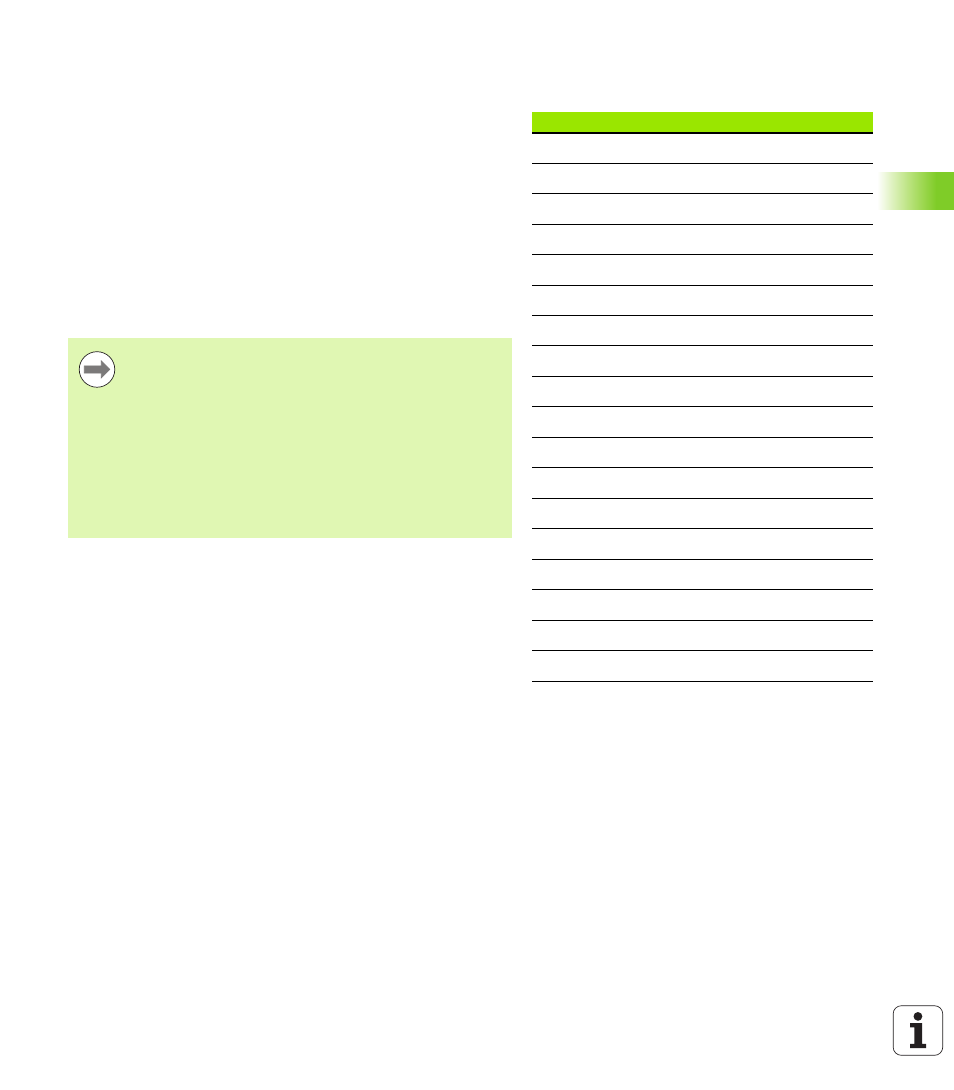31 programming variables – HEIDENHAIN SW 548328-05 DIN Programming User Manual
Page 389

HEIDENHAIN MANUALplus 620, CNC PILOT 620/640
389
4.31 Pr
ogr
amming v
a
ri
ables
4.31 Programming variables
The Control provides a variety of variable types.
The following rules apply to the use of variables:
Multiplication/division before addition/subtraction
Up to 6 bracket levels
Integer variables:
Integer values between –32767 and +32768
Real variables:
Floating point numbers with max. 10 integers and 7
decimal places
Do not use any blank spaces when programming variables.
The variable number itself and an index value, if applicable, can be
described by another variable, e.g.: #g( #c2)
See the table for the available mathematical operations
Syntax
Mathematical functions
+
Addition
–
Subtraction
*
Multiplication
/
Division
SQRT(...)
Square root
ABS(...)
Absolute amount
TAN(...)
Tangent (in degrees)
ATAN(...)
Arc tangent (in degrees)
SIN(...)
Sine (in degrees)
ASIN(...)
Arc sine (in degrees)
COS(...)
Cosine (in degrees)
ACOS(...)
Arc cosine (in degrees)
ROUND(...)
Round
LOGN(...)
Natural logarithm
EXP(...)
Exponential function ex
INT(...)
Truncate decimal places
SQRTA(.., ..)
Square root of (a
2
+b
2
)
SQRTS(.., ..)
Square root of (a
2
–b
2
)
The distinction made by CNCPILOT XXXX and
MANUALplus X110 controls between variables that can
be modified at runtime and those that cannot, does not
apply any longer. The NC program is no longer compiled
before the program run, but at runtime.
Program NC blocks containing variable calculations with
"slide code $.." if your lathe has more than one slide.
Otherwise, the calculations are repeated.
Positions and dimensions transferred into system
variables are always indicated in metric form. This also
applies when an NC program is run in inches.
